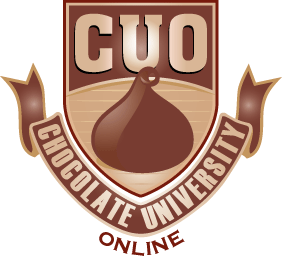Chocolate Chip Cookie History
One of the most loved forms of chocolate is chocolate chip cookie. It never fails to uplift our spirits and give us a sense of comfort.
What most people are not aware of is that, just like many other inventions, these goodies were just made by accident and Ruth Graves Wakefield was responsible for such in the year 1933. Wakefield was the owner of the Toll House Inn, located in Whitman, Massachusetts. It was a well-known eatery that time. Wakefield’s strategy paved way for its popularity, she provided her customers a supplementary serving of food to bring home along with her homemade cookies as dessert.
One day, Wakefield was Butter Drop Do cookies which were allegedly her favorite. She usually made them with bakers’ chocolate, but she ran short of it. So she opted for Nestle semi sweet chocolate that was available in her kitchen. She mixed it into the mixture thinking it would melt and blend well. And to her dismay, they didn’t blend. Instead, the chocolate chips held their shape and softened to a creamy texture, and the rest is chocolate chip history.
Wakefield and Nestle settled with a conformity that would allow Nestle to print the “Toll House Cookie” recipe on its packaging. And what does Wakefield get in exchange? A lifetime supply of chocolates!
During World War II, Nestle Toll House Cookies were being sent to GI’s from Massachusetts and they would be handed out to other American soldiers. Afterwards, some soldiers wrote home asking for Nestle Toll House cookies, which made them in-high-demand.
Nonetheless, the history of chocolate chip cookies varies from one story to another. One of the other stories claims that George Boucher, together with his daughter Carol Cavanagh, worked at the Toll House inn. And they said that some Nestle chocolate bars by the shelf were accidentally dislodged and fell straight into a mixer that had cookie dough, forming little chunks of chocolate in the mix. Boucher claims Wakefield suggested to trash the dough mixture, but he insisted on keeping and baking it.
Despite the controversies in its history, it doesn’t change the fact that we all love chocolate chip cookies. Always have, always will!
More Chocolate Information Articles
Categories: chocolate articles Tags: Chocolate Chip Cookie, Chocolate History, cookie dough, cookie history
Chocolate’s Dark Side
During the medieval times, Christianity and chocolates didn’t mix. The Catholic Church used to bracket together chocolate and heretical behavior like blasphemy and even witchcraft. Does it even make sense? Read on.
I bet if you’re the type who digs medieval anything or maybe you’ve heard it at school at a certain point in your student life, you probably know about ‘Inquisition’. Never heard? Well then, let me shed some light on you about this dreadful thing. The Inquisition, Inquisitio Haereticae Pravitatis (inquiry on heretical perversity), gives a picture of the heavy-handedness of religion during that certain time, persecution, and prejudice. It was the fight against heresy by the Roman Catholic Church.
You may be wondering by now what exactly it is about chocolate that connects such a morbid even to our beloved chocolate. For starters, even downing a chocolaty beverage while in a particular event can be included in heretical behaviors. Truth be told and as morose as it may seem, there were even stories told in which Charles II, King of Spain, supposedly drank chocolate while observing Inquisition victims being slain.
Document and papers about Inquisition even acknowledged some actions of chocolate merchants that are involved in anti-Christian behavior, chocolate was even utilized in seduction and witchcraft. Those documents also showed how people went on betraying one another either by choice or by force.
A lot of individuals during those tough times were laid blame on for using chocolate in “non-Christian” acts. Some chocolatiers were even denounced for being observant Jews.
Thankfully, nowadays, chocolate is tantamount to anything cheery, joyful, and festive. It was quite a transition and a very disheartening story to hear. But it’s a thing of the past. All we can do now is be grateful that we can enjoy chocolate freely!
Related Chocolate Information Articles
Categories: chocolate articles Tags: anything, Chocolate History, history of chocolate, Inquisitio Haereticae Pravitatis, thing, told
Chocolate From The Past
Due to intense love of chocolate, more and more research were done just to trace back its history. While it’s great to just indulge in the goodness of your chocolate, it wouldn’t hurt to know how it made people in the past just as happy as we are now because of it.
Give credit where credit is due. That said, must be given to Fathers, specifically Dominicans, for having the Spanish appreciate chocolate. In 1544, they lured the court by preparing chocolate which was presented by a Kekchi Maya delegation of New World natives.
Because of faith, chocolate spread, making new regions of the world appreciate it. Europeans started to love it, so they made use of chocolate in Christian celebrations. They used chocolate to sustain different aspects of their lives, including physical, economic, as well as spiritual.
Chocolate progressively became a tool for adulation, which is offered for the greater glory of God. As a matter of fact, monks whipped up chocolate. They drank and hoarded it secretly. There was even a room mainly for chocolate drinking. Alphonse de Richelieu, cardinal of Paris, was privileged to be among the first ones to experience chocolate. There was a personal chocolate maker for him.
Chocolate was a reputed “road food” when the church had a mission to California. The thrill of chocolate experience traveled there through Franciscans like Father Junipero Serra. When he left Spain to fulfill his duties in the New World, he brought along with him some chocolates.
Unfortunately, storms made his ship stop at Puerto Rico. When the captain defaulted on his promise to feed them, a local Christian mission provided chocolate for sustenance. Serra reported: “For eighteen days we ate better than in any convent, all drinking chocolate every day.”
The best chocolatiers back then, known as mendiants, always made delicacies. These immortalize the mendicant (beggar) orders-Augustinians, Carmelites, Dominicans, and Franciscans-those that were serving the poor and depend mainly on donations for support. Dried fruits and nuts in the mendicant were symbols for the color of different monastic robes: raisins for Dominicans, hazelnuts for Augustinians, dried figs for Franciscans, and almonds for Carmelites.
Adapted from On the Chocolate Trail: A Delicious Adventure Connecting Jews, Religions, History, Travel, Rituals and Recipes to the Magic of Cacao, published by Jewish Lights.
Categories: chocolate articles Tags: chocolate background, Chocolate History, done, drinking, New World, published
350-year-old Iced Chocolate Recipe Recently Discovered
A university lecturer has found some notes that had instructions on how to make a 17th century version of what many of us are crazy about these days, the chilled coffee drink, but in this case, it’s chocolate. Health warnings about drinking too much of the brown confection were even attached to it.
Dr. Kate Loveman, an English lecturer at the University of Leicester, said that the recipe instructed the maker to mix chocolate, some “snow” and some salt and “shake the snow together (for) sometime” in what’s supposedly the first sample of its kind.
She said, “It’s not chocolate ice-cream but more like a very solid and very dark version of the iced chocolate drinks you get in coffee shops today.”
Because of the fact that in those times, freezing food was a pain in the neck, this iced dessert would have been a luxury. Dr. Loveman discovered a myriad of other recipes in a note written by one of the country’s earliest chocoholics, the Earl of Sandwich, in 1668. His great, great grandson is allegedly the one who invented the sandwich. Dr. Loveman has now published a paper on the introduction of chocolate into England.
She said the chocolate became famous first in England by 1640 as an exotic drink made out of cocoa beans. During the 1660s, chocolate typically went hand in hand with advice about safe consumption.
There was even this certain doctor during such time that gave warnings about how the composition of hot chocolate could stir up insomnia, excess mucus, or hemorrhoids.
“People worried iced chocolate in particular was ‘unwholesome’ and could damage the stomach, heart, and lungs. She added, “There were ways around this and the Earl thought the best way to ward off the dangers of eating frozen chocolate was drink some hot chocolate about an hour afterwards.”
To cut it all short, the chocoholics of the modern day didn’t just recently surface. Chocoholics have been around for like forever, or at least ever since the treat was discovered.
Categories: chocolate articles Tags: chocoholics, Chocolate History, chocolate recipe, England, first, hot chocolate
The Link Between Jews and Chocolate
Jews are known wanderers. Because of such, the Jewish people have played a huge role in global trade. There’s a part to the story though that is heard pretty rarely. That’s the link between the Jewish and chocolate during the era of the Spanish Inquisition.
Spanish explorers were the ones who introduced chocolate to Spain, while Jews brought it to world cities like New York and Amsterdam. The rest is history, and this is reflected on the subject of Rabbi Deborah Prinz’s book, “On the Chocolate Trail.”
Based on what the author said, she was just pretty curious with regard to this specific part of Jewish history. As a lifelong chocolate lover, the link between chocolate and religion spars too many intrigues. She says she eats a plain chocolate bar once or twice a day. She has always had a sweet tooth, and she never grew out of it.
She has been to museums in countries like Belgium, France, Spain, England, and Israel. While the book has a chapter that focuses on chocolate in Israel, the larger theme focuses on chocolate in South America, Mexico, and Spain.
She also stated, “People are very interested in the highlights of the Jewish connection to chocolate. Another focus is the colonial [American] period’s use of chocolate. Some groups are more interested in historical perspectives. I also talk about New York and Newport. And a third approach is about religious ethical values and chocolate.”
We have always hear about chocolate-covered bacon. Rabbi Deborah mentioned in her book that she almost ate this outrageous but yummy chocolaty treat. She said she’s not crazy about raw chocolate, but she is fond of chocolate-covered espresso beans and things like that.
Categories: chocolate articles Tags: always, Chocolate History, Deborah Prinz, Jewish, Jews, New York, On the Chocolate Trail, Spain
I Scream, You Scream, We All Scream For Ice Cream
Ice cream is usually dubbed as “The Greatest American Dessert.” Even though this product is typically American, the United States cannot claim its origin and source.
Ice cream is defined as a frozen dairy dessert made from cream or milk, usually combined and manufactured along with other flavors and fruits. More often than not, it contains sugar. Sometimes, other sweeteners are used.
The ingredients are slowly stirred while the product is cooled down. This lets air be integrated and keeps the formation of ice crystals. The outcome will be a smooth, semi-solid foam that is extremely malleable and can be scooped easily. Drool now!
Little is known about the early history of ice cream, but this treat is said to originate in Europe. Now, the United States has been the lead among all the countries in the large and intense production of ice cream.
Before the advent of the today’s refrigeration, ice cream was a mere luxury that was intended to be eaten only on special occasions. It had to be produced with a source of ice, often cut from lakes and ponds at winter. The ice was stored in the ground, say, in brick ice houses and was insulated by straw.
In the past, the ice cream industry grew at a slower pace than it is today. Until 1900s, the total American output of ice cream didn’t go beyond 30 million gallons annually.
The yearly manufacturing and production of it has been working its way up on a steady and exponential rate with the introduction of hard and soft ice cream, nowadays produced at more than a billion gallons a year. In accordance with the International Dairy Foods Association, “approximately 1.53 billion gallons of ice cream and related frozen desserts were produced in the U.S. in 2011.” Stunning, eh?
This just means that the annual per capital consumption is not less than 20 pounds. Additionally, this means that 9% of total milk production goes to the ice cream industry.
Where’s the chocolate in this article? It’s here, yep it’s here now. Chocolate ice cream is always near the top in flavors. Vanilla always wins. That’s the sad ending.
Categories: chocolate articles Tags: Chocolate History, chocolate ice cream, cream, ice.cream, means, production, today
The Chocolate Bomb
No, don’t be deceived by the title. I am in love with chocolate, no argument there, but it’s not the message I want to get across. The Nazis know exactly what I’m talking about. Those people painted our world’s history red, and not the good red. However, they could actually get pretty creative. Death by chocolate, I think, was coined from their stunning efforts. Hmmm. If you’re not crazy about gruesome tales, then maybe you would not want to continue reading.
Typically, “Death by Chocolate” is a favorite sweet treat. It refers to a chocolate cake that is topped with chocolate ice cream and chocolate syrup and then sprinkled with chocolate brownies or chocolate shavings on top. But the Nazis kicked things a notch higher and on a more literal note. So high actually that it gave a whole new meaning to the term. They made death by chocolate happen as they turned chocolates into bombs. Explosive, isn’t it?
The British Intelligence Agency MI5 made public a series of documents as well as photos that show camouflaged equipment utilized by the Nazis. In those papers was a sketch of what seemingly looks like an ordinary chocolate bar, but as the old adage goes, don’t judge the book by its cover. What looked like a piece of sweet could actually trigger an explosion.
These bars of chocolate were much like your typical hand grenades. They were in steel cases, however covered with chocolate, and they were actually wrapped like a real candy bar. Neat trick, Nazis. And in order to detonate the bomb, the innocent victim would break off the bar like usual, which then reveals a canvas strap that functioned like the pin of a grenade which when removed would blow up in a matter of seconds.
It became common knowledge that the Nazis were targeting a member of the Royal Family. The chocolate bar would turn out as a surprise as the eater was in the middle of enjoying it. Creepy, in every sense of the word.
Categories: chocolate articles Tags: Chocolate History, History, Nazi




